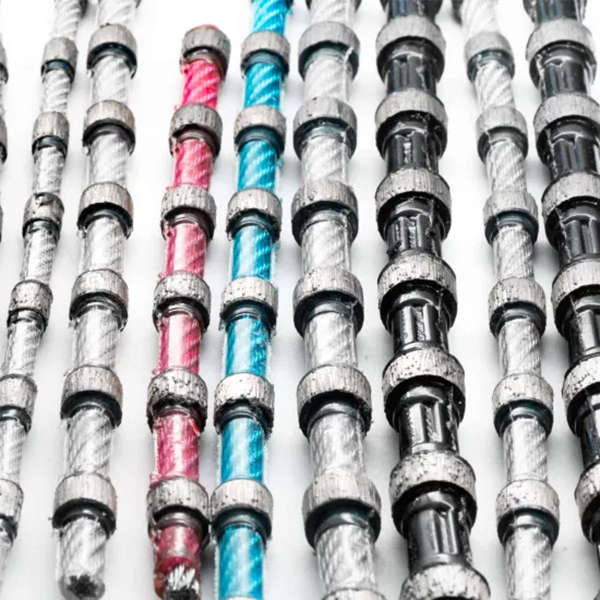The Releated Products of Rubber Diamond Wire Saw Factory
Rubber Diamond Wire Saw Factory
Table of Contents
Exploring the Precision of Rubber Diamond Wire Saws
In the dynamic world of industrial cutting, precision and efficiency are paramount. One tool that has revolutionized the way we approach hard materials like stone, concrete, and even metals is the rubber diamond wire saw. This article delves into the intricacies of a rubber diamond wire saw factory, showcasing how these advanced tools are manufactured to meet the demands of various industries.
The Importance of Quality Control in a Rubber Diamond Wire Saw Factory

Quality control is the cornerstone of any successful manufacturing process, especially when it comes to producing high-performance tools such as rubber diamond wire saws. In a dedicated factory setting, stringent quality checks are implemented at every stage—from the selection of raw materials to the final product testing. These measures ensure that each saw meets the highest standards of durability and cutting performance.
To maintain this level of quality, factories employ state-of-the-art machinery alongside skilled technicians who oversee the production line. Regular maintenance of equipment and continuous training for staff further enhance the reliability of the products coming out of the factory.
Advanced Manufacturing Techniques in Rubber Diamond Wire Saw Factories
Modern rubber diamond wire saw factories leverage advanced manufacturing techniques to produce saws that can handle the toughest jobs. Cutting-edge technology is used not only in the fabrication of the wire itself but also in the embedding of diamond segments that give these tools their unparalleled cutting ability.
One notable technique involves the precise placement of diamond particles along the length of the wire, ensuring uniform distribution and optimal cutting performance. Additionally, the use of high-tensile steel cores provides the necessary strength and flexibility required for navigating complex cuts.

Customization Options Available from Rubber Diamond Wire Saw Manufacturers
Given the diverse applications of rubber diamond wire saws across different industries, many manufacturers offer customization options tailored to specific client needs. Factors such as wire diameter, diamond concentration, and overall length can be adjusted based on the intended use of the saw.
This level of customization allows users to select a saw that perfectly matches their project requirements, whether they’re working on large-scale construction projects or intricate stonework. By working closely with clients, factories can deliver bespoke solutions that enhance productivity and efficiency on the job site.
Environmental Considerations in Rubber Diamond Wire Saw Production

As awareness grows regarding the environmental impact of industrial activities, rubber diamond wire saw factories have begun implementing sustainable practices throughout their operations. This includes recycling processes for water used during production, reducing waste generation, and optimizing energy consumption.
Moreover, efforts are made to source eco-friendly materials where possible, contributing to a greener manufacturing cycle. These initiatives not only benefit the environment but also align with corporate social responsibility goals, enhancing the reputation of companies within the industry.
Future Innovations in Rubber Diamond Wire Saw Technology
Looking ahead, the future of rubber diamond wire saw technology promises exciting advancements. Research and development teams within leading factories are exploring new alloys and composite materials that could further improve the lifespan and effectiveness of these tools.
Integration of smart technologies, such as embedded sensors that monitor wear patterns and performance metrics, may also become standard features in next-generation models. Such innovations will undoubtedly continue to push the boundaries of what’s possible with rubber diamond wire saws, setting new benchmarks for performance and reliability in the years to come.
By focusing on quality, innovation, and sustainability, rubber diamond wire saw factories are well-positioned to support the evolving needs of their customers while driving forward the frontiers of industrial cutting technology.
Request for Quotation
报错: 未找到这个表单





